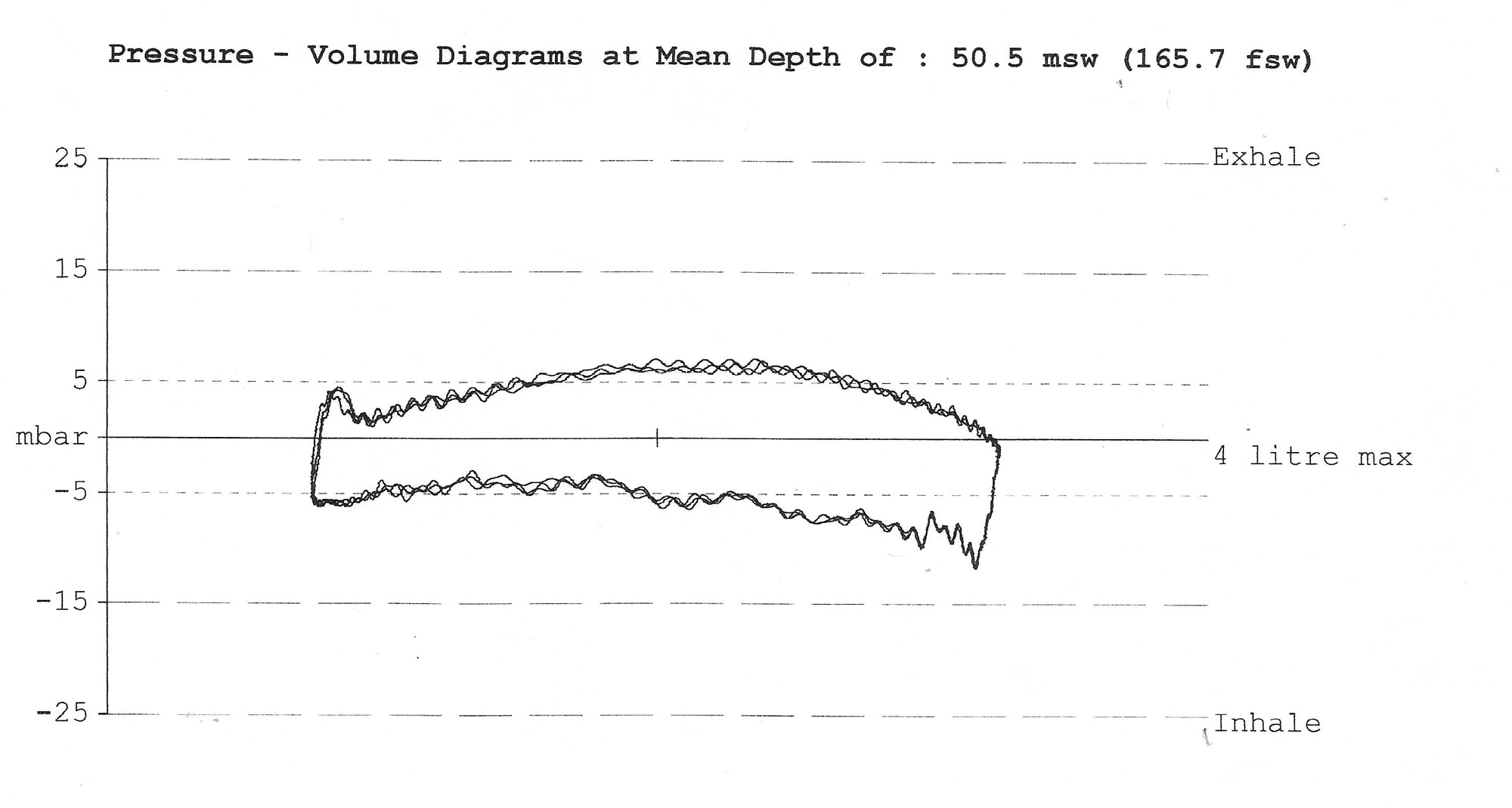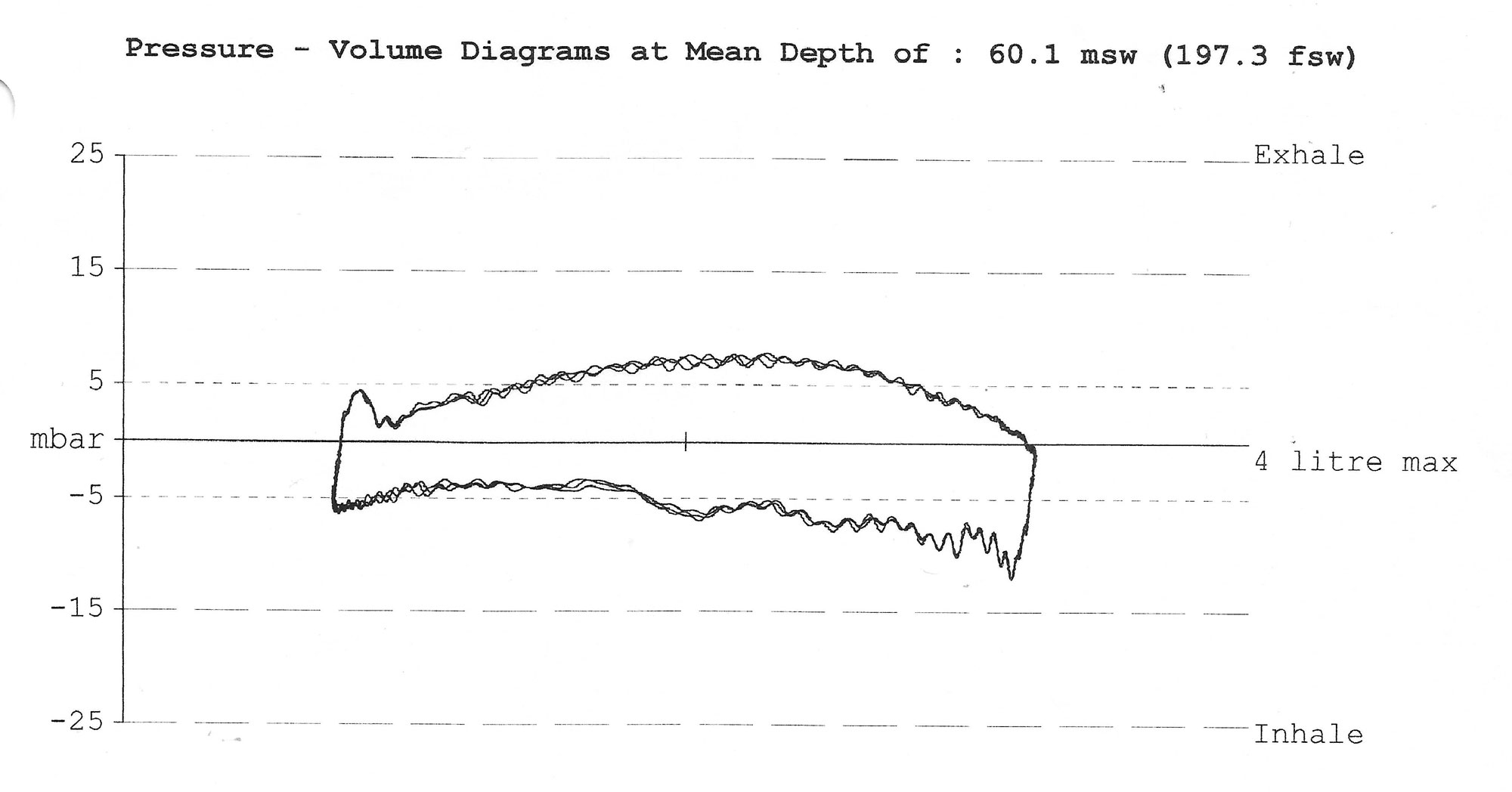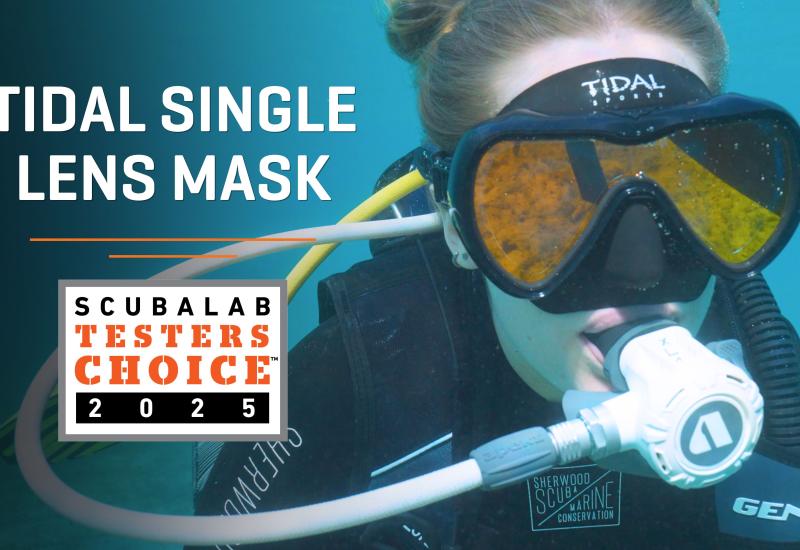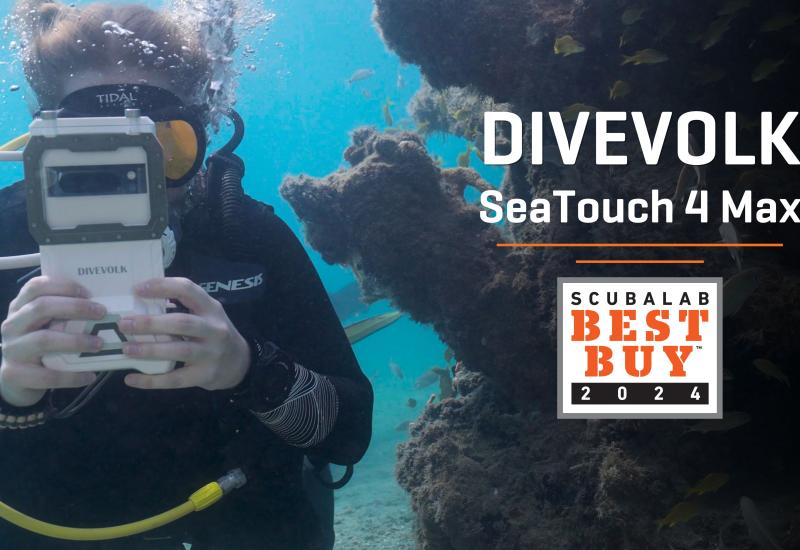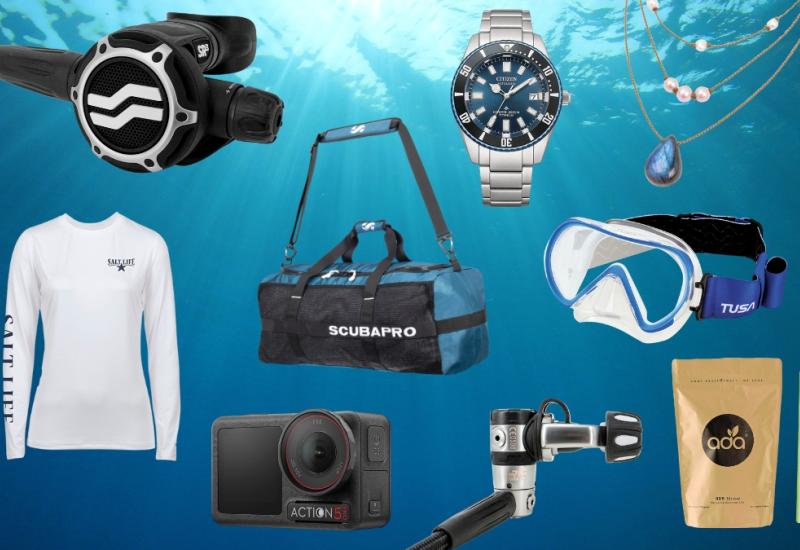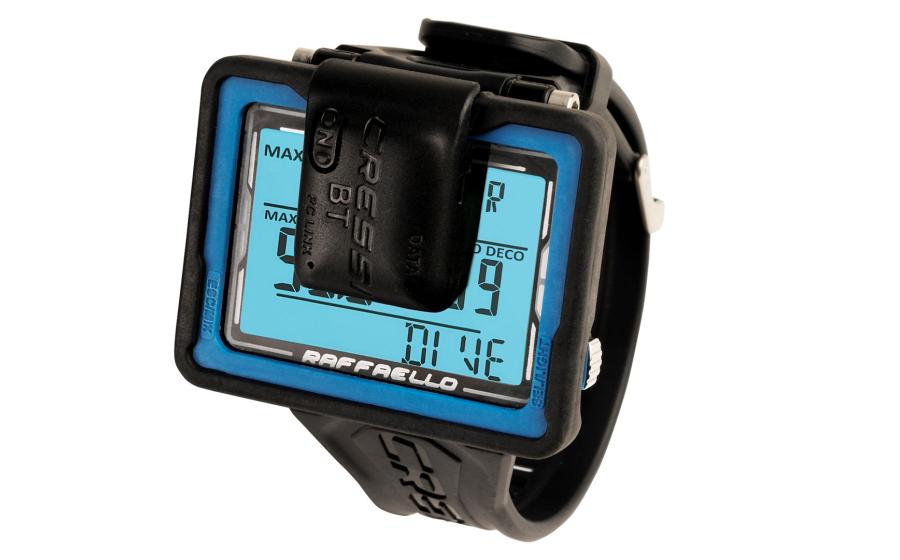The Best Scuba Regulators of 2020 Reviewed
A high-quality scuba regulator that provides smooth, easy breathing is a critical part of any diver's gear setup. That's why we took this crop of new regulators to an ANSTI breathing simulator and in the water for a thorough review of the best scuba regulators of 2020. ScubaLab's team of test divers gave their scores on a variety of factors, offered comments and picked their favorites.
Check out our review for the best scuba regulators of 2020 below, and visit our gear page for more on the latest ScubaLab reviews.
How we test
Objective testing was conducted on an ANSTI wet breathing simulator that measures effort—“work of breathing”—to move air through a regulator as it is subjected to a precise series of depths and breathing rates. The testing was done at Dive Lab, a commercial testing facility in Panama City Beach, Florida.
Tests are performed at a supply pressure of 750 psi (+/- 25 psi). Regs are tested in the face-forward position, with breathing adjustments set at the wide-open/no free-flow point. The simulator pressurizes the test chamber to simulate depths of 132 feet of seawater (fsw), 165 fsw and 198 fsw. Each “breath” by the machine moves 2.5 liters of air through the regulator; we do this at breathing rates of 15, 25 and 30 breaths a minute. These volumes of air—2.5 liters multiplied by the breathing rate —are called respiratory minute volumes (RMV).
Why do we test at these depths and breathing volumes?
- 37.5 RMV @ 132 fsw: This represents the maximum recreational depth at a somewhat aggressive breathing rate.
- 75 RMV @ 132 fsw: This simulates the potential demand at maximum recreational depth for a diver at an extremely heavy work rate, or loosely simulates two divers buddy breathing at a somewhat aggressive rate.
- 62.5 RMV @ 165 fsw: This represents the European conformance standard EN250. This is also the depth and breathing rate commonly used by manufacturers when determining a regulator’s performance.
- 62.5 RMV @ 198 fsw: This is the U.S. Navy’s Class A test depth and breathing rate (although the Navy uses a higher supply pressure).
The simulator measures the work of breathing in joules per liter (j/l). As depth and breathing rate increase, the work gets harder. If a reg doesn’t exceed the test parameters, we push it into even more extreme conditions to see what the regulator can do.
We don’t test on the simulator for a pass/fail grade but to gauge regs’ performance in carefully controlled conditions.
Ergonomic testing was conducted at Alexander Springs Recreational Area in central Florida by a team of divers who evaluated each reg in the following categories, assigning a score from 5 (excellent) to 1 (poor) and recording comments about the comfort and performance of the reg. The ergo test categories were:
• Ease of breathing in swimming position: How well does the regulator deliver air in a standard swimming position?
• Ease of breathing in face-up position: How well does the regulator deliver air when looking up toward the surface?
• Ease of breathing in head-down position: How well does the regulator deliver air in a head-down position?
• Dryness in normal swimming position: During normal swimming, how dry does the regulator breathe?
• Dryness in faceup position: When face-up, how dry does the regulator breathe?
• Dryness in head-down position: When head-down, how dry does the regulator breathe?
• Bubble interference: How well does the reg deflect bubbles from your field of view?
• Ease of clearing: How difficult is it to clear the regulator by exhaling into the mouthpiece or using the purge?
• Purge stiffness: Is it soft and progressive or forceful and abrupt?
• Resistance to free-flow: Is the reg prone to uncontrolled free flow on the surface or at depth? If equipped with a Venturi control, is it easy to access and use?
• Breathing adjustment: Is the adjustment knob easy to use, and does it perform effectively?
• Comfort of second stage: Are the size, shape and weight such that they help prevent jaw fatigue?
• Noise: Does the reg operate with excessive noise, such as rasping or rattling?
Regs are also evaluated for ease of setting up the first stage and hose arrangements. Test divers also rate regs for the comfort of their standard mouthpieces; because mouthpieces are inexpensive and simple to change, mouthpiece scores are not included in overall scores.
Aqua Lung Leg3nd Elite

Jon WhittlePRICE $899 | CONTACT aqualung.com
The third generation may have a new spelling and an updated look, but it’s still the Legend at heart. On the simulator it handily took excellent scores at all our breathing rates and depths, recording the lowest work of breathing in the test. In test dives, it was the only reg to take excellent scores for ease of breathing in normal, face-up and head-down positions. It was also rated excellent for dry breathing in normal and face-up positions, and took very good scores for comfort and noise.
“What a smooth, quiet reg,” noted one tester, while others described it as “silky” and “effortless.” Its breathing adjustment was rated very good for effectiveness, though some testers noted it was liable to freeflow if handled carelessly with the adjustment wide open.
New features include deeper heat-exchange ribs and radial openings on the cover, to improve airflow while resisting current-induced free-flow. With top performance in the water and on the simulator, and selected a favorite of test divers, the Leg3nd Elite is our Testers Choice for regs over $500.
Apeks MTX-R C

Jon WhittlePRICE $949 | CONTACT apeksdiving.com
The heat exchangers on the first and second stages that have more fins than a shark convention give away this reg’s cold-water capabilities. But this newest member of the MTX line offers plenty to like even in less extreme conditions. The oversize breathing adjustment knob, Venturi lever and big purge button that make it easy to operate with thick gloves make it even easier in warm conditions. And the low breathing effort that helped it take excellent scores in the simulator also earned excellent scores from test divers for easy breathing and dry performance.
The second stage is, as one tester noted, “big, but light”—about 10 ounces on our scale—and earned a very good score for comfort. The swivel-turret first stage with five LP ports and double-swivel hose allows for easy setup and hose routing. Exhaust ports are user-changeable without tools, with wide and narrow ports included; we used the wide ones, taking the top score in the test for bubble interference.
Capable, comfortable and a favorite of multiple test divers, the MTX-RC was a top contender in our test.
Cressi AC 25 Master Cromo

Jon WhittlePRICE $539.95 | CONTACT cressi.com
The Master Cromo’s distinctive brushed-stainless second stage may look familiar, since it has appeared in (and won) past tests with other first stages.
But it’s paired here with the new, balanced-piston AC25 with a revolving turret and five LP ports, which may be its best teammate yet. On the simulator it came within a hair of taking excellent scores across the board, and that performance extended to our test dives, where divers rated it excellent for ease of breathing in swim position and very good for dry air delivery in all positions; it also tied the top score for low noise. “Silent runner,” one tester noted.
The second stage isn’t especially small and has a fair amount of hardware, but felt lighter in the water than it looks, earning a very good score for comfort. Testers found the breathing adjustment ergonomic and effective, if a bit stiff; one gripe was the way the soft diaphragm cover and stainless front plate can occasionally catch a fingertip when purging. With outsize comfort and performance for its price, the AC25 Master Cromo is our Best Buy for regs.
Mares 28XR - HR

Jon WhittlePRICE $900 | CONTACT mares.com
As you’d expect from its XR designation, this new reg has a tec-oriented design and is in fact the company’s first dedicated stage reg. The swivel turret has four LP ports, with a fifth placed in-line, and a centrally located valve connection that gives a range of options for a streamlined setup whether in stage, sidemount or backmount configuration. The DIN-only first stage has an auto-sealing device for safe removal underwater; standard equipment includes a MiFlex hose with an abrasion-resistant outer coating.
The 28XR was a perfectly amiable in-water companion, impressing testers with its smooth, dry performance.
The second stage is compact and lighter than its metalwork suggests, and divers rated it very good for comfort. The purge is soft and predictable, and the reg cleared easily and cleanly, taking one of the top scores for clearing. The breathing adjustment was rated very good for effectiveness, though some big-mittened divers found the knob a bit short. The 28XR was selected among the favorites of multiple testers.
Scubapro MK25 EVO/D420

Jon WhittlePRICE $999 | CONTACT scubapro.com
This reg’s distinctive second stage was modeled after Scubapro’s venerable D-Series. The elongated, fiberglass-reinforced body has a large, hinged purge button that tied for the top score in the test, with divers impressed by its responsiveness and how well it delivered a precise burst of air. The top-mounted Venturi switch is easy to reach, although test divers were divided as to its effectiveness. By placing the diaphragm lower than the inlet valve and mouthpiece, the reg’s design leverages the pressure gradient for easy air delivery. Coupled with the MK25 EVO first stage, it took excellent simulator scores across all of our test rates and depths. In the water, it was rated very good for ease of breathing in all positions and inspired tester comments such as “eager breather” and “effortlessly smooth.” Testers rated it very good for dry performance in normal and faceup positions but found it a little wet head-down, where it was scored good. While the second stage is on the large size, its light weight helped it take a very good score for comfort.
Tusa RS - 681

Jon WhittlePRICE $699 | CONTACT tusa.com
The balanced-diaphragm first stage of the RS-681 is about as compact as a reg can get, although it still squeezes in four LP and two HP ports. The elliptical second stage has two sets of exhaust ports, with auxiliary exhausts located next to the mouthpiece, to reduce exhalation work. On the simulator, the RS-681 gave a solid performance, earning good and very good scores across our range of depths and breathing rates; testers reported similar performance in our test dives. “Very smooth breather” and “breathes nice” were typical tester comments. The reg is bone dry, with testers scoring it very good for dryness in all positions. They also scored it very good for ease of clearing, though some found the purge a bit too stiff and eager. The Venturi switch proved capable of taming free-flows, but divers found the tiny lever difficult to reach. The breathing adjustment, however, earned nothing but praise, with the large, easy-to-grasp knob clicking reassuringly as testers dialed in the perfect breathing resistance. “Very effective,” one tester described it.
Cressi AC25 XS Compact

Jon WhittlePRICE $379.95 | CONTACT cressi.com
This combo pairs Cressi’s newest balanced-piston first stage with an established member of its family of second stages—the appropriately named Compact that we’ve tested before with the MC9 and AC-10V first stages. It showed solid performance on the simulator and took very good scores across the board for ease of breathing and dry air delivery in all positions. But where it really shined was comfort, tying the top score in its category thanks to the second stage’s tiny profile and light weight—barely 5 ounces. “So small and light,” one tester noted.
“The whole thing fits in the palm of my hand,” added another. Test divers found it easy to purge and clear, helped by a diaphragm cover nearly as wide as the reg. The top-mounted Venturi control is easy to reach and operate, though the reg wasn’t prone to free-flow even in dive position. Some divers noted a bit of extra noise and bubble interference—no surprise given exhaust ports that are just over 1½ inches apart. But its trim dimensions and near weightless comfort made it a top contender in its category.
Genesis Prana

Jon WhittlePRICE $405 | CONTACT genesisscuba.com
The Prana is based on the long-serving GS2000, with a clear family resemblance. But while the chunky, balanced-piston first stage and top-mounted Venturi control are still there, the Prana has benefited from the makeover. The breathing adjustment is more ergonomic and the reg’s look has been freshened from the Y2K-era feel of its predecessor. And the Prana has the same smooth breathing and lightweight comfort that we liked in the GS2000. Test divers rated it very good in all positions for ease of breathing and dry performance. Its compact profile and near-neutral feel in the water tied top score in its category for overall comfort. “So small and light,” said one tester. Divers found the breathing adjustment effective, but also noted that a wide-open setting was a little prone to free-flow. One sore spot was the wide-flanged mouthpiece that found some testers’ tender points, prompting them to note they’d change it first thing. But test divers also selected it as their favorite in its category. The Prana is our Testers Choice for regs under $500.
Hog D1X Sealed Yoke Classic 2.0

Jon WhittlePRICE $319.95 | CONTACT edge-gear.com
On the simulator, the D1X delivered the lowest work of breathing in its category. That performance carried over to our test dives, where testers rated it very good for ease of breathing and dry operation in all positions. “Very easy, smooth breather” was a typical test diver comment. The reg’s second stage isn’t the smallest here, but it is light for its size, and earned a very good score for comfort as well as for bubble interference. The reg has both a Venturi control and breathing adjustment, features not always seen around this price point. The large knurled breathing adjustment knob doesn’t have a huge range of movement, but it had a pronounced effect on breathing effort—to the point that some testers found the reg on a bit of a hair trigger when spun wide open. “Super light pull lets you breathe naturally, but wind it tight before surfacing or it will blow,” one diver observed. The balanced-diaphragm D1X first stage sports two high-pressure ports and a rotating turret with five low-pressure ports. The D1X was named among the favorites of multiple testers.
IST Sports R860

Jon WhittlePRICE $480 | CONTACT istdivingsystem.com
The R860 put in one of the best performances on the simulator in its category, with an excellent score at recreational depth and good scores throughout. It also showed smooth, low-effort performance in our test dives, taking very good scores in all positions for ease of breathing. “Nice air delivery,” one tester noted. The breathing adjustment was rated very good, with divers praising its precision and wide range of adjustment. “Spot on,” one diver observed. Divers also liked the reg’s quiet operation, awarding it a very good score for noise. Testers found the purge effective, but noted the somewhat stiff, smallish center button wasn’t easy to locate or operate for divers with larger fingers, or those wearing thick gloves. The second stage, with an attractive alloy ring surrounding the diaphragm, is solidly built and has a fair bit of heft, which led testers to score it just good for comfort, with one diver noting it “bounces around” a bit. The reg has two high-pressure ports and a rotating turret with four low-pressure ports, and is also available with an additional in-line low-pressure port.
Seac MX100

Jon WhittlePRICE $429 | CONTACT seacsub.com
Since we last tested the MX100, it’s had some upgrades in its internals designed to improve stability of airflow. On the simulator it churned out a solid performance, earning a very good score at recreational depths and good scores beyond. Divers rated it very good for ease of breathing and dryness in swim position but noticed an increase in effort and water entry while in face-up and head-down positions. Testers felt the reg was fairly resistant to free-flow, but some were critics of the tiny, hard-to-reach Venturi control. Another sore spot was the mouthpiece, whose tall, wide tabs were uncomfortable for divers with smaller mouths. The purge is powerful and kind of stiff, requiring a careful touch when clearing to avoid a strong blast. “When it goes, boy, does it go,” one tester observed. The lightweight second stage earned good scores for comfort and was rated very good for noise. “Quiet and comfortable” was a typical tester comment. The balanced, environmentally- sealed diaphragm first stage is compact and has two HP and four LP ports.
Sherwood Oasis Pro

Jon WhittlePRICE $489 | CONTACT sherwoodscuba.com
“Smooth,” “dry” and “quiet” were words that came up again and again in test-diver comments regarding the Oasis Pro. No surprise given the reg’s strong performance on the ANSTI machine and very good scores for ease of breathing in all positions. For dryness, the reg scored just shy of excellent and was the highest-rated reg in its category. Test divers also found it extremely quiet, awarding it the only excellent score for noise among this year’s class, and rated it good for bubble interference. They also liked the looks of the elliptical second stage, which is accented with green highlights and a shiny polished mesh.
“Looks cool,” one tester commented. The diaphragm cover is somewhere between stiff and supple, providing resistance to free-flow even in strong current but allowing for easy, predictable control of the purge. In fact, the reg was so resistant to free-flow—even when we were trying to make it blow—that some testers questioned whether a Venturi control was necessary. The piston first stage has two HP and four LP ports.
In the Loop
In the ANSTI simulator, some regs display a remarkable consistency in performance even in conditions verging on abuse. A good example is the Apeks MTXRC, as you can see in the ANSTI loops below.
The first is at 132 feet, but at an extreme 30 breaths per minute— a challenge for any reg.
The second loop shows the reg at 165 feet at 25 breaths per minute. The third shows 198 feet at 25 breaths per minute. What’s noteworthy is that the loops, recording the effort to inhale (on the bottom) and exhale, are nearly identical. In fact, the total work of breathing measured in these loops varied only by a few one-hundredths of a joule per liter—all of them low enough to take excellent scores in our test.
Ask Roger
Q: Why don’t I see my reg in your test?
A: ScubaLab’s policy is to test gear that we’ve not tested before, or that has had changes affecting performance since we last tested it. If you don’t see your reg here, odds are it’s among the hundreds we’ve already tested. You can find the complete test results here.















